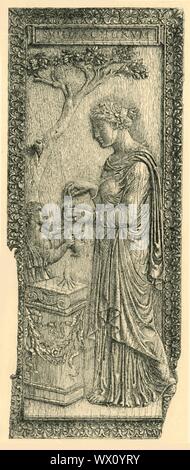
They were later reinforced with buttresses.Īt the western entrance side and the eastern liturgical side are arched openings that are extended by half domes of identical diameter to the central dome, and carried on smaller semi-domed exedras. The pendentives implement the transition from the circular base of the dome to the rectangular base below to restrain the lateral forces of the dome and allow its weight to flow downwards.

The cupola is carried on four, spherical, triangular pendentives, an element that was first fully realized in this building. The dome of Hagia Sophia has spurred particular interest for many art historians, architects, and engineers because of the innovative way the original architects envisioned it.

These two cities symbolize the human race.Īn interior view of Hagia Sophia: Emperor Justinian ordered the construction of Hagia Sophia in 532 CE. Beside them are representations of the cities of Jerusalem and Bethlehem. Above the arch, on both sides, two angels hold a disc. The crown is supported by four angels, and every surface is covered with a profusion of flowers, stars, birds, and animals, specifically many peacocks. The cross-ribbed vault in the presbytery is richly ornamented with mosaic festoons of leaves, fruit, and flowers that converge on a crown that encircles the Lamb of God. On the side walls, the corners, next to the mullioned windows, are mosaics of the Four Evangelists, who are dressed in white under their symbols (angel, lion, ox and eagle).
EARLY CHRISTIAN IVORY DIPTIC PANEL SERIES
A series of mosaics in the lunettes above the triforia depict sacrifices from the Old Testament. The upper one, the matrimoneum, was reserved for married women. The central section is surrounded by two superposed ambulatories or covered passages around a cloister. The church is most famous for its wealth of Byzantine mosaics -they are the largest and best-preserved mosaics outside of Constantinople. The church has an octagonal plan and combines Roman elements (the dome, shape of doorways, and stepped towers) with Byzantine elements (a polygonal apse, capitals, and narrow bricks). The construction of the church was sponsored by a Greek banker, Julius Argentarius, and the final cost amounted to 26,000 solidi (gold pieces). The architect or architects of the church is unknown. The church was begun by Bishop Ecclesius in 527, when Ravenna was under the rule of the Ostrogoths, and completed by the twenty-seventh Bishop of Ravenna, Maximian, in 546 during the Byzantine Exarchate of Ravenna. This is known as a centrally planned church. Peter’s, San Vitale consists of a central dome surrounded by two ambulatories. The diptych was once in the Cathedral of Palermo.San Vitale: Unlike Western churches like St. Large diptychs decorated with Christian scenes were probably used from an early date during the Mass or perhaps to record the names of deceased parishioners, donors, or saints recited in the litany. The sequence of scenes is paralleled in the mosaics of S. Apollinare Nuovo in Ravenna, and must have been based on a similar cycle. The healing of the leper is the only scene not depicted in Early Christian art the Andrews diptych composition may have been based on the Old Testament scene of Job's suffering, which it closely resembles. The iconography of each scene on the Andrews diptych has precedent in earlier sarcophagi, ivory plaques, and wood carving, but the diptych is unusual in its restriction to Christ's miracles. The stocky figures with round heads set close to the shoulders and the heavy drapery folds connect the relief to other northern Italian ivories related to the Venatio plaque in Liverpool. The predominant opinion is that the diptych was produced in northern Italy toward the middle of the fifth century.

The minute, carefully rendered brickwork is especially common on fourth- to fifth-century ivories, however.

The rather schematic handling of these architectural backgrounds led to view the diptych as a ninth-century copy of an Early Christian ivory. Trees and various types of buildings provide a backdrop in all six fields. In these scenes, Christ is accompanied by witnesses and participants. Each field contains one of Christ's miracles: on the front panel, the Raising of Lazarus, the Miracle of Cana, and the healing of the leper on the back are the Multiplication of the Loaves and Fishes, the healing of the blind man, and the healing of the paralytic. In the recesses left for wax on the inside of the plaques, two standing saints, now almost totally faded, were painted at a later date, probably between the ninth and twelfth centuries.īoth leaves are framed by a border of egg-and-dart decoration and divided into nearly square fields by bands of acanthus motif. Except for a break in the lower right corner of the front panel and a keyhole introduced into the rear plaque, the diptych is in excellent condition.


 0 kommentar(er)
0 kommentar(er)
